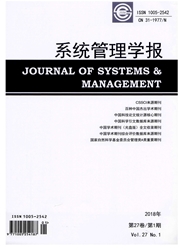

 中文摘要:
中文摘要:
针对建立一流大学的学术团队建设问题,以科学化方法研究了末位淘汰机制对于学术团队创新力的作用。用著名的NK模型定义了4种常见的团队组织结构,即局部结构、小世界结构、无标度结构、层次结构。采用生态学中BS模型对末位淘汰机制对学术团队的作用进行建模,通过网络的演化结果分析末位淘汰机制对学术团队创新力的影响。分析表明:末位淘汰机制能否促进学术创新力的提升和是团队的组织结构细切相关的,末位淘汰机制对具有"局部和小世界结构"特征的学术团队具有稳定的提升作用,而对于"层次结构和无标度"结构的团队,将使学术创新力呈现大幅震荡,从长期来看学术创新力并未显著提升。并且对于稳定结构的学术团队,末位淘汰机制将使团队最终呈现个体分布的"相变"状态,即团队中大部分个体的创新力处于某个临界值之上,并由动力学建模验证了"相变"的结论。最后,对某高校学院的近年数据进行统计,验证了结论的有效性。
 英文摘要:
英文摘要:
The evolution properties of creativity of academic teams under bottom-out mechanism are studied,with the objective to build world-class university.Four commonly used organizational topology structures are defined using NK model,i.e.,local structure,small-world structure,scale-free structure and hierarchical structure.Then,the evolution of the academic creativity is simulated with BS model.The result shows that the bottom-out mechanism does not always improve the creativity of academic teams,and it depends on the organizational structures.Good academic teams should hold the properties of "local" and "small world" organizational structure.While for those teams with scale-free structure and hierarchical structure,the bottom-out mechanism may cause large vibrations in academic creativity and thus exhibits no improvement in the long run.Furthermore,to the academic team with good organizational structure the bottom-out mechanism may make team to reach the so-called "phase transition" state eventually which means most of individuals in the system has creativity over a critical value.This result is also validated using mathematical analysis.The result is verified by actual data with respect to international papers from some certain college.
 同期刊论文项目
同期刊论文项目
 同项目期刊论文
同项目期刊论文
 An Approach Based on Evaluation Particle Swarm Optimization Algorithm for 2D Irregular Cutting Stock
An Approach Based on Evaluation Particle Swarm Optimization Algorithm for 2D Irregular Cutting Stock A method of solving a large-scale rolling batch scheduling problem in steel production using a varia
A method of solving a large-scale rolling batch scheduling problem in steel production using a varia 期刊信息
期刊信息
